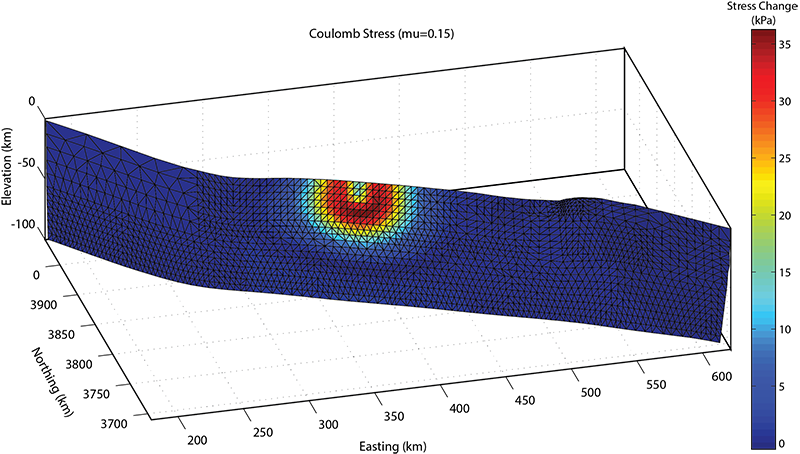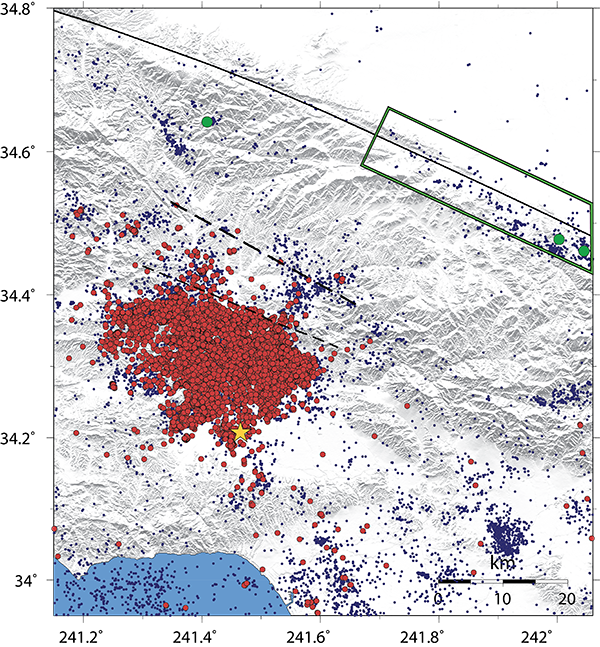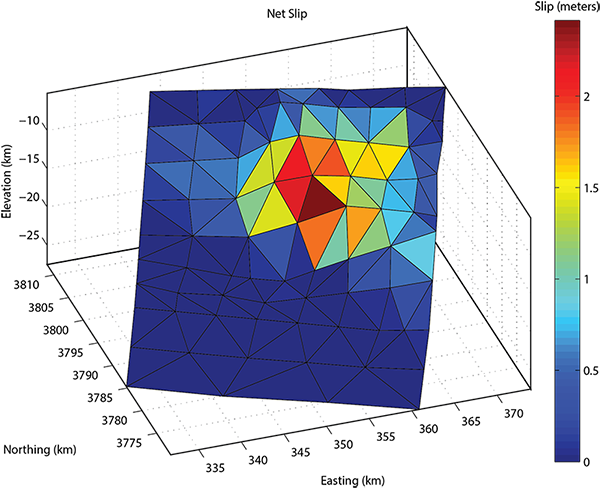Postseismic Deformation Associated with the 1994 M6.7 Northridge Earthquake
Julia Irizarry || 2011-2013
The 1994 M6.7 Northridge earthquake was one of the most expensive and devastating natural disasters in the United States. This earthquake occurred on a previously unknown blind thrust fault. Savage & Svarc (2010) proposed that the 1994 M6.7 Northridge earthquake may have triggered deep asesimic slip on the San Andreas fault to the north. In order to test this hypothesis, Julia has been working with me along with collaborators Gareth Funning and Chad Severson at the University of California Riverside to create a mechanical model of the stress changes and the potential for triggered slip on the San Andreas due to the Northridge event. We are currently preparing a manuscript based on this work (Severson et al. in prep), so stay tuned for the paper!
Coseismic Slip on the Northridge Thrust Fault
Above: Fault mesh of the Northridge Fault based on the SCEC Community Fault Model. The colors show the net coseismic slip based on a joint inversion of GPS and InSAR data (Severson et al. in prep). This was the slip model that we used to test for stress changes and potential for triggered slip on the San Andreas fault. If you click on the image above, a 3D interactive PDF will be loaded. The 3D PDF must be viewed with Acrobat Reader or Professional 7.0 or later. Bult-in PDF viewers and Apple Preview cannot render 3D data. For more info on 3D PDF files, refer to my 3D fault models page.
Static Coulomb Stress Changes on the San Andreas Fault

Above: Fault mesh of the San Andreas Fault based on the SCEC Community Fault Model. The colors show the static Coulomb stress changes assuming a coefficient of friction of 0.15. Note that the Northridge earthquake did appear to bring a portion of the San Andreas fault closer to failure.
Earthquake Epicenters near the Northridge and San Andreas Faults

Above: Earthquake epicenter locations from the precisely relocated earthquake catalog of Lin et al. (2007)
(blue dots). Events that occurred within 100 days (i.e. the postseismic period) after the Northridge event are shown with red circles.
Events that occurred within 100 days of Northridge and also within 20 km of the San Andreas are shown with green circles. Note that
only two events that occurred within 100 days of the Northridge earthquake and within 20 km of the San Andreas fault in the region
of model predicted slip (inside the green rectangle).
So, did the Northridge earthquake trigger slip on the San Andreas fault?
Stay tuned for our paper (Severson et al. in prep).

